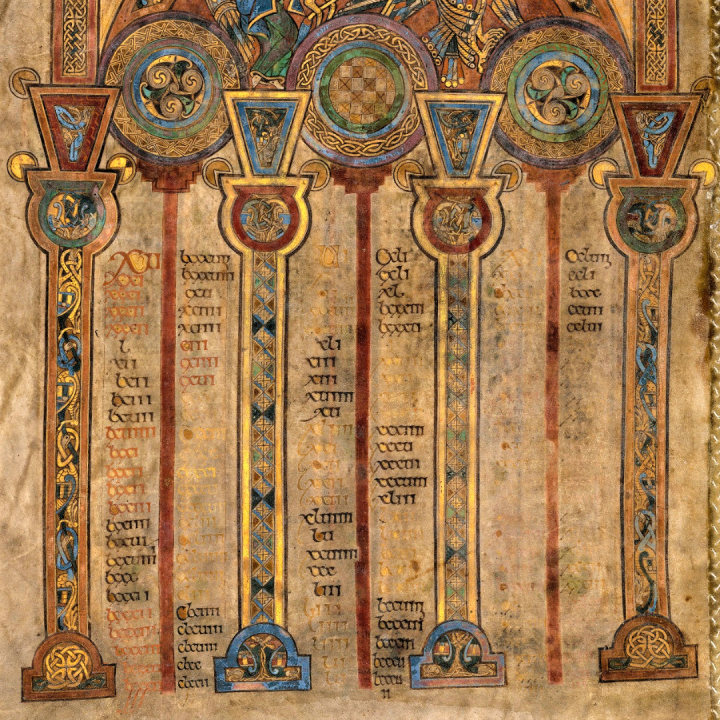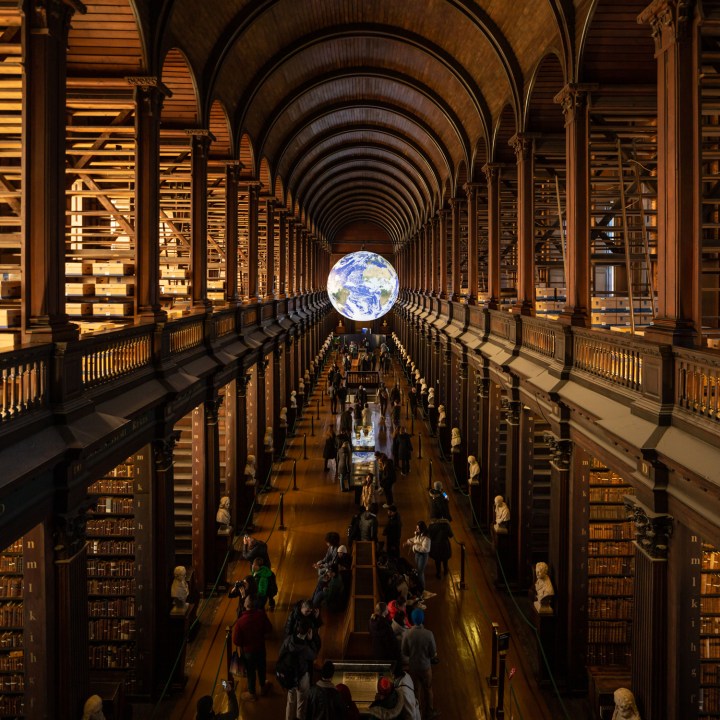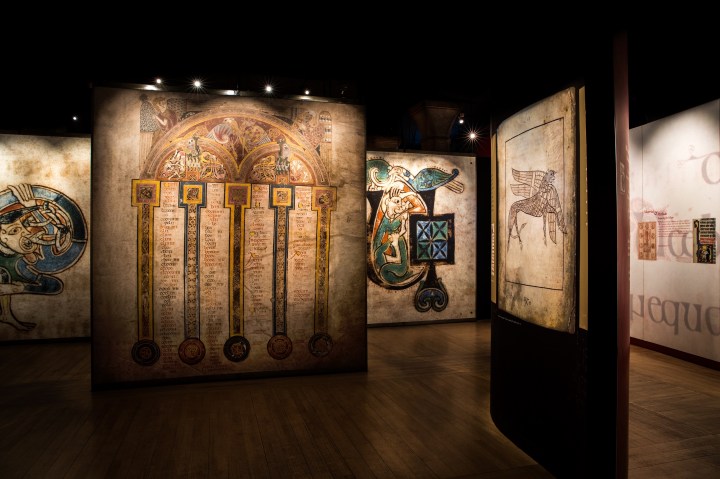
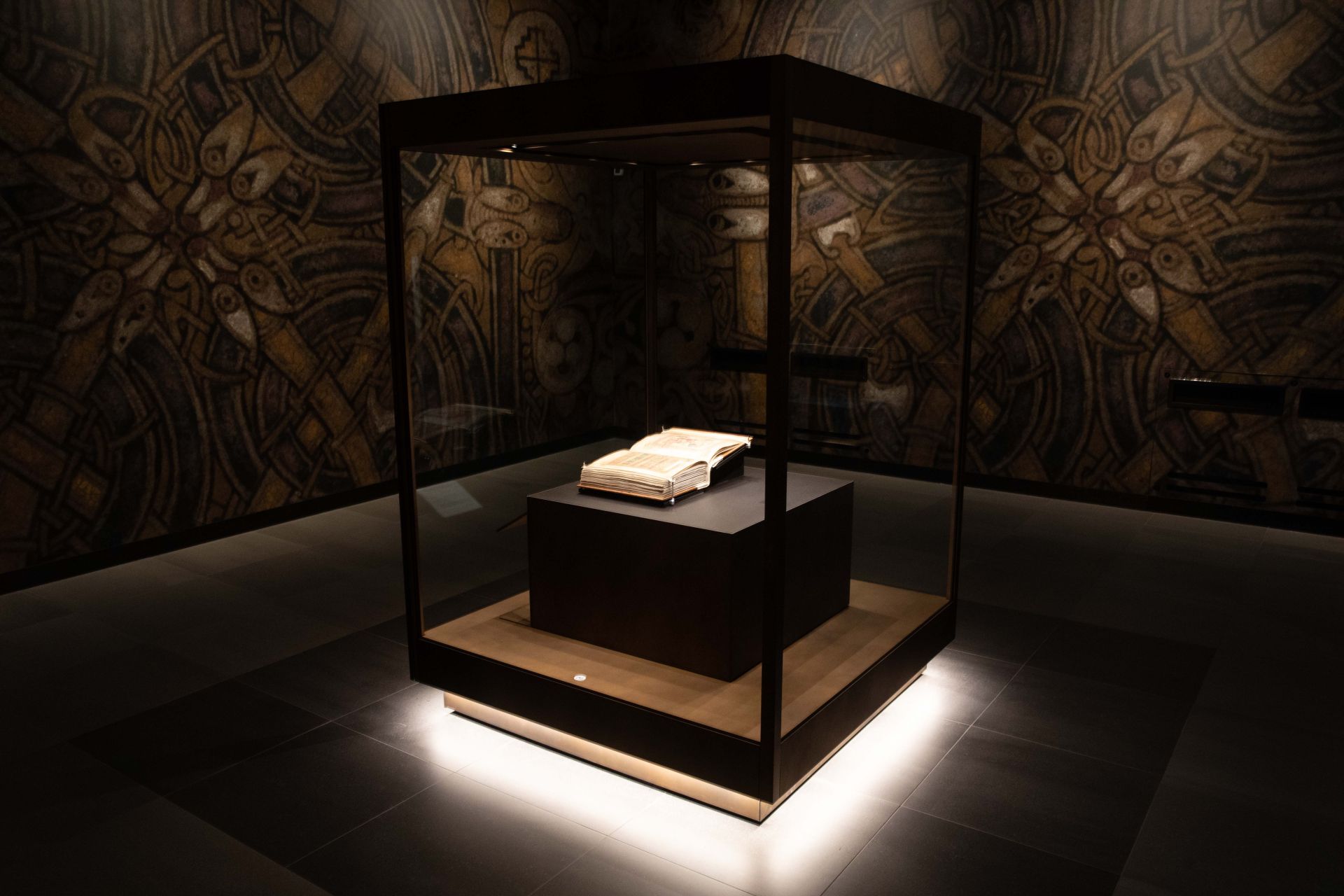

Pages on display
The current opening of the Book of Kells is the Gospel of John, folios 313v – 314r
The current opening of the Book of Kells is the Gospel of John, folios 313v – 314r
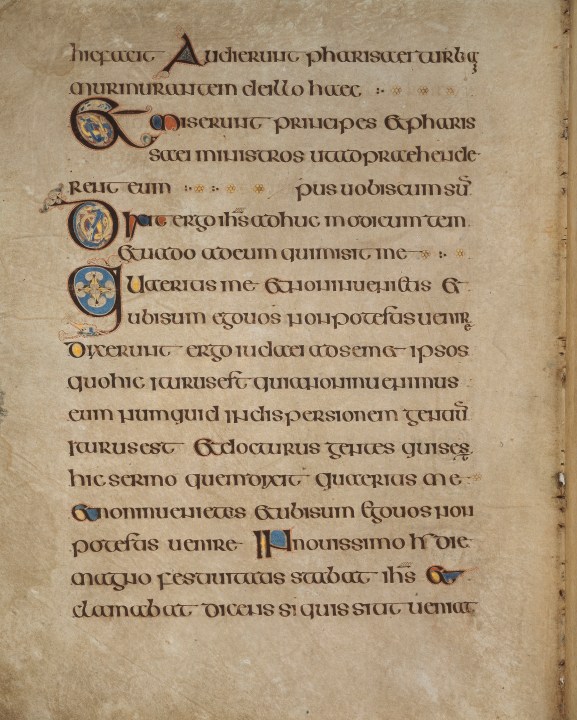
Gospel of John, folio 313v
John 7.31-44 describes dissension about Jesus among the people: some say he is Christ, others say this is not possible, as he comes from Galilee. This opening is full of hidden messages in the text of John 7.31-44.
The bowl of the initial Q of Quaeritis (‘You shall seek’) on folio 313v, line 8, is filled with an elaborate cross, a symbol of crucifixion, and the tail of the Q is formed by a lion’s head, with its protruding tongue tied in a knot, outlined in red dots for emphasis. This decorated initial Q has a two-fold message. The elaborate cross in the bowl of the Q alludes to the crucifixion of Christ and his resurrection. In general, the lion’s head with the tongue is a motif stressing the word of God or Christ. Here the entangled tongue may allude to the cryptic message in the text: ‘You will look for me, but you will not find me, because you cannot go where I will be’. The gaps between the text such as those on lines 2, 5 and 7 are filled with colourful flourishes such as bunches of yellow grapes.
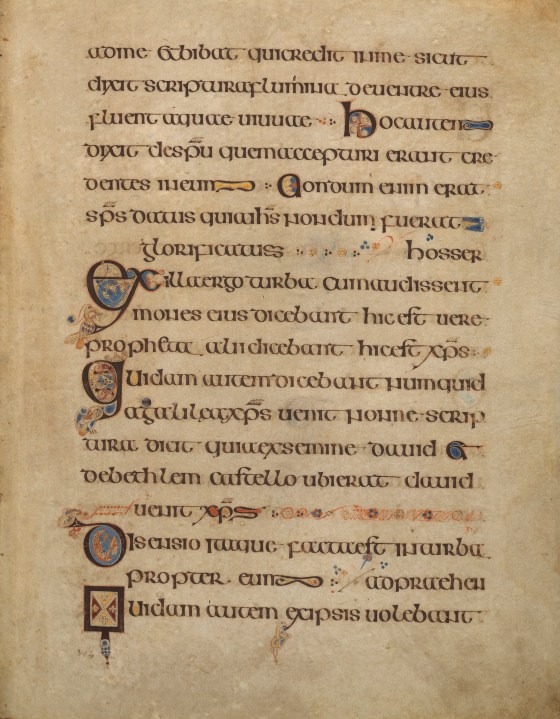
Gospel of John, folio 314r
In lines 9-10 (verse 40) on folio 314r, some of the crowd around Jesus declare hic est uere propheta (‘this is the prophet indeed’). On line 8, a dove with an olive branch in its beak forms the tail of the word Ex ‘of that’ above, perching on the word propheta ‘prophet’ two lines down, acting as a commentary on references made by Jesus to the Holy Spirit in the previous verse. In the last line, the initial letter Q is formed of Greek crosses placed around a saltire cross, acting as a visual defence against those who, it is said, wish to apprehend Jesus. On line 15 the abbreviation XPS for Christus ‘Christ’ is emphasised through red infills and by its position on the line.




